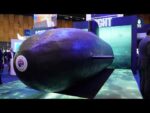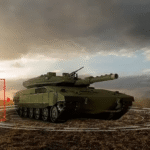The Royal Air Force (RAF) has formally retired its MQ-9A Reaper remotely piloted aircraft system (RPAS) after more than a decade of operational service. The retirement marks a significant transition in the UK’s unmanned aerial capabilities as the RAF prepares to field the next-generation Protector RG Mk1—an enhanced variant of General Atomics’ MQ-9B SkyGuardian platform.
End of an Era: RAF’s MQ-9A Reaper Timeline
The RAF first introduced the MQ-9A Reaper into service in 2007 under urgent operational requirements to support coalition operations in Afghanistan. Operated by No. XIII Squadron and No. 39 Squadron from Creech Air Force Base (Nevada) and later RAF Waddington (UK), the fleet provided persistent intelligence, surveillance, reconnaissance (ISR), and precision strike capabilities.
Over its 15-year tenure, the RAF’s Reapers flew more than 140,000 hours across multiple theaters including Afghanistan, Iraq, and Syria under Operation Shader. Armed with AGM-114 Hellfire missiles and GBU-12 Paveway II laser-guided bombs, the platform became a key asset in counter-insurgency and counter-terrorism operations.
The final operational sortie was flown on September 29, 2024. The official retirement ceremony took place at RAF Waddington on October 3rd, 2025.
Protector RG Mk1: The Successor Platform
The retirement of the MQ-9A clears the way for full operational deployment of the Protector RG Mk1—the UK-specific variant of General Atomics’ MQ-9B SkyGuardian. Unlike its predecessor, the Protector is certified to NATO STANAG 4671 airworthiness standards for integration into civilian airspace—making it one of the first RPAS platforms capable of routine peacetime operations alongside manned aircraft.
Key enhancements over the MQ-9A include:
- Extended endurance up to 40+ hours
- Satellite communications (SATCOM)-based control with global reach
- Enhanced weather tolerance and deicing systems
- Automatic takeoff and landing capability
- Weapons compatibility with Brimstone missiles and Paveway IV bombs
The UK Ministry of Defence ordered an initial batch of 16 Protectors under a £1.5 billion program. The aircraft are being delivered progressively through late 2024 into early 2026 with initial operating capability (IOC) expected in mid-to-late 2025.
Strategic Implications for UK ISR and Strike Posture
The shift from MQ-9A to Protector reflects broader changes in British defense doctrine emphasizing interoperability with NATO allies and future-proofing against emerging threats such as contested airspace environments and peer adversaries.
The Protector’s ability to operate in controlled airspace enables domestic training without segregated zones—a critical advantage for force readiness. Moreover, integration with Link-16 datalinks enhances real-time coordination with allied forces during joint operations.
This transition also supports UK ambitions within AUKUS Pillar II frameworks focused on AI-enabled ISR sharing among partners like Australia and the United States.
Sustainment Challenges During Transition Period
The drawdown of MQ-9As presents short-term capability gaps until Protectors are fully integrated into frontline squadrons. While training pipelines have been established at RAF Waddington using simulators and early SkyGuardian units delivered by General Atomics for trials since mid-2023, full mission readiness will take time to mature.
No. XIII Squadron is expected to become fully operational on Protectors by late 2025 or early 2026 following conversion training cycles. In parallel, infrastructure upgrades at Waddington—including new hangars and SATCOM ground stations—are ongoing under Project Proteus.
A Look Ahead: Future Roles Beyond Counterterrorism
Unlike their predecessors whose missions were largely confined to permissive environments against non-state actors, Protectors are designed for multi-domain operations including maritime surveillance over North Atlantic routes or Arctic patrols aligned with NATO deterrence postures.
Their modular payload bays allow future integration of electronic warfare pods or synthetic aperture radar (SAR), expanding their utility beyond traditional ISR roles into electronic support measures (ESM) or even anti-submarine warfare when paired with sonobuoy dispensers—a concept reportedly explored by DSTL as part of future capability studies.
Conclusion
The retirement of the RAF’s MQ-9A Reapers closes a pivotal chapter in British unmanned combat aviation history but signals an evolution toward more capable platforms tailored for complex threat environments. As Protectors enter service over coming months, they will redefine how Britain projects persistent surveillance and precision effects globally—while staying interoperable within allied frameworks shaping tomorrow’s battlespace.








